Remote Mining System M131 MOPMS (USA)
New installation tools
Since the mid-seventies, two remote mining systems have been developed for the use of FASCAM mines. The first was towed M128 GEMMS centrifugal type. Together with it, it was proposed to use the Modular Pack Mine System compact portable device (“Modular container mining system”) or MOPMS.
The development work on the MOPMS continued until the 1982-83 of the year, after which a new model of engineering equipment entered service. Ready container for the installation of mines received the official designation M131. This product was supposed to use mines like M77 and M78 for different purposes.
Of particular interest is the classification of the MOPMS complex. Its M131 container, according to American documents, is a remote mining system. At the same time, M77 and M78 products are not considered mines. They are classified as submunitions, although the M131 is not a cassette. The reason for all this is the specific architecture of the MOPMS system and the specific ways of installing mines.
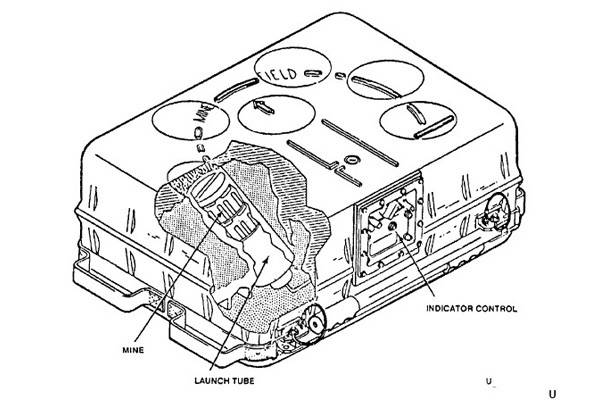
The internal device of the product. Figure Uxoinfo.com
Mine Container
The M131 MOPMS product has a metal case less than 700 x 500 mm in size and weighs 120 pounds (less than 55 kg) in a combat position. The body is made in the form of a metal box with a rectangular lid. The latter is installed on the product during assembly and can not be removed. On top of the container are seven round holes with metal lids. Six caps form a semicircle, while the seventh is on the longitudinal line of the product near its center. On one of the walls is a remote control with connectors for connecting external means.
For the convenience of personnel, two pairs of carrying handles are hinged on the long sides of the container. They are bred to the side, and the product forms a kind of stretcher. M131 is easily transferred to the future minefield and is established by a two-person calculation. For long distances, the container is transported by any available transport.
The main part of the internal volumes of MOPMS is occupied by inclined launchers-shafts for containers with mines. The tubular mines are located in a semicircle with an inclination outward, which ensures the spread of mines on the ground. The electrical control system is connected to the launchers with its own power source.
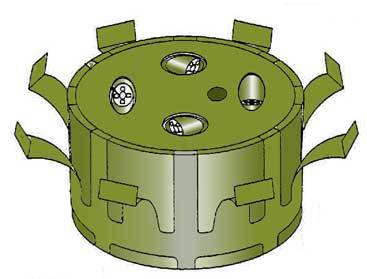
M77 anti-personnel mine. On the top cover, loads are visible for ejecting the target sensor threads. Figure Saper.isnet.ru
When the M131 container was assembled at the factory, a cassette with three mines of the FASCAM family was placed in each launcher. For the MOPMS mining system, M77 and M78 type ammunition was offered. Mines had the same size (diameter 120 mm, height 66 mm), but differed in weight, internal equipment and purpose. M77 product was anti-personnel weapon, M78 - anti-tank.
The FASCAM anti-personnel mine for M131 weighed 1,41 kg and carried 410 g of explosive. Mina triggered when offset from the installation site; the target sensors were eight kapron threads scattered around. The M78 anti-tank mine weighed 1,7 kg, carried a double-sided shaped charge with a mass of 585 g and received a magnetic target sensor. M78 could hit an armored vehicle in the bottom; effective damage to the tracks was excluded. Mines M77 and M78 had a self-liquidator.
In the case of the MOPMS mining system there were seven cassettes with two types of 21 mine. Standard equipment included 17 M78 and 4 M77 products. Cassettes with anti-personnel "submunitions" were installed in the body with regard to their uniform dispersion over the terrain. Each cassette had its own expelling charge. The cassette threw away all the mines at once.
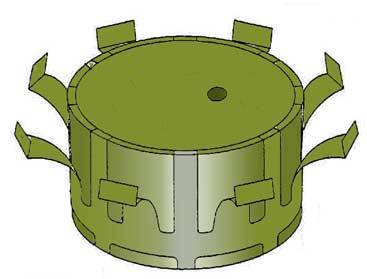
Anti-tank mine M88. Figure Saper.isnet.ru
The composition of the complex M131 included several different consoles. Own container remote performed only basic functions. The M71 remote control panel controlled the shooting of mines and was also responsible for programming the self-killer over the air. He could control 15 containers within a radius of 1 km. The M131 container was also compatible with the M32 and M34 radio remote controls. All radio systems made it possible to control the self-liquidators or to carry out the mines manually.
The alternative was a standard blasting machine. She provided only the release of mines at the command of the operator. When using the machine, the self-liquidators retained the original setting - 4 h.
Feature of application
According to the statutes, the remote mining system M131 MOPMS could be used as an independent engineering tool or as an addition to other equipment. In all cases, its use was not difficult. When organizing a mine-explosive obstacle, the sappers had to place the required number of containers on the ground according to the required scheme, and also connect them to the control systems.
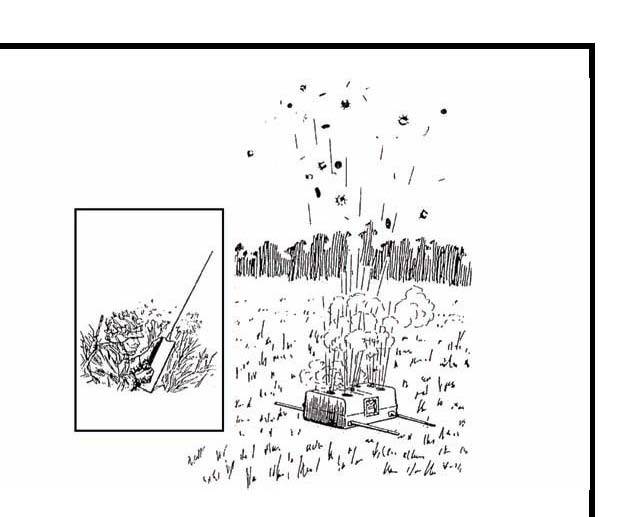
Run mines with M131 container. Figure from the statute of the FM 3-21.75 The Warrior Ethos and Soldier Combat Skills
The MOPMS combat complex could, at any time, place mines into the pipeline. Before the operator’s command, the mines remained in cassettes and did not pose a danger to their troops. Thus, when used independently, M131 units could move along a future minefield without fear of their own ammunition.
On command from the control panel, the M131 system emitted min. Due to the inclination and cultivation of launchers-mines, the mines were scattered within a semicircle with a radius of 35 m. Thus, one MOPMS mined a section of width 70 m along the front and 35 m depth. 1 mine on average accounted for 3,3 m front. In this case, a danger zone was formed around the container. On a site with dimensions 55 m forward and sideways, as well as 20 m ago, it could be from 1 to 4 minutes. The rest went to the calculated semicircle with a radius of 35 m. After 2 minutes after leaving the cassette, the products M77 and M78 became a combat platoon.
A separate mine site from one 131 container was called a minefield module. Such "modules" could be used in different ways, both independently and in groups. In the first case, the area with the 21 mine was supposed to close the gaps in the previously set barriers. In particular, the joint operation of the GEMMS and MOPMS systems was envisaged. A large number of containers M131 proposed to apply for the organization of a large minefield. Such devices should be placed in a staggered manner with 70 m intervals along the front and 35 m depth, which ensured complete mining of a section of arbitrary length to a depth of 70 m.
The remote mining system M131 MOPMS with FASCAM mines was proposed for solving several tactical tasks. With its help, it was possible to quickly organize mine-blasting barriers of defensive purpose, both with instant and deferred laying of mines. Provided for the use of disturbing minefields, the organization of ambushes and the provision of hostilities in urban environments.
Product service
The remote mining system M131 entered service with the American army in the early eighties and quickly became widespread. These results have contributed to the simplicity of serial products, versatility and ease of use. The MOPMS complex with the FASCAM mines turned out to be a good addition to the towed GEMMS system and other mining facilities. In some cases, he showed advantages over other samples.
In 1991, the M131 MOPMS systems were used for the first time in a real military conflict — during Operation Desert Storm. Similar weapons were also used in subsequent wars, including again in Iraq. In real conditions, the serial mining systems proved to be quite good, however, there were difficulties. The specific climate of Iraq led to the rapid overheating of the M77 and M78 mines and disrupted some circuits. So, approximately 20% of ammunition was refused by the self-liquidators, which added to the work of the engineering troops.
However, the operation of M131 systems continued. These containers remain in service until now - unlike some other mining systems for ammunition of the FASCAM family. Currently, the development of promising models of mine weapons and means of its installation, but new products can not replace existing ones. The M131 MOPMS system remains in service and will be in operation for the foreseeable future.
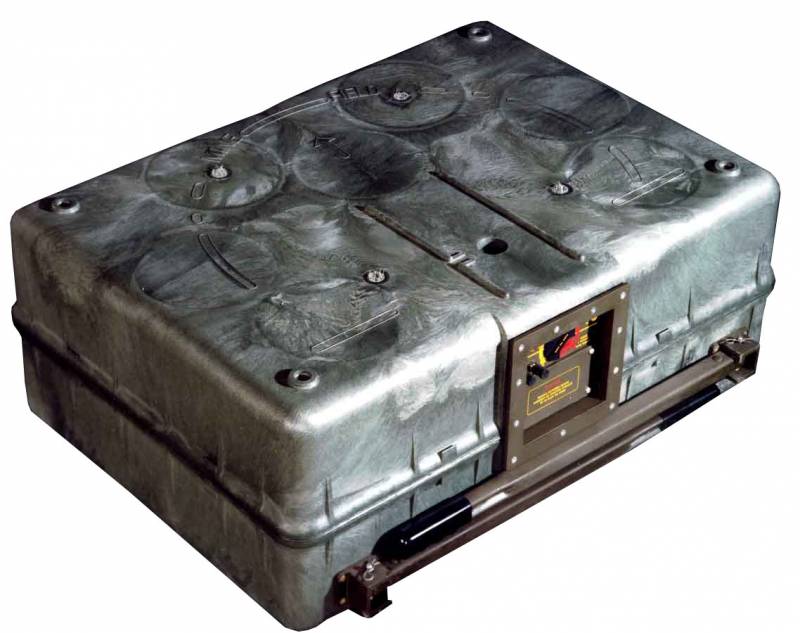
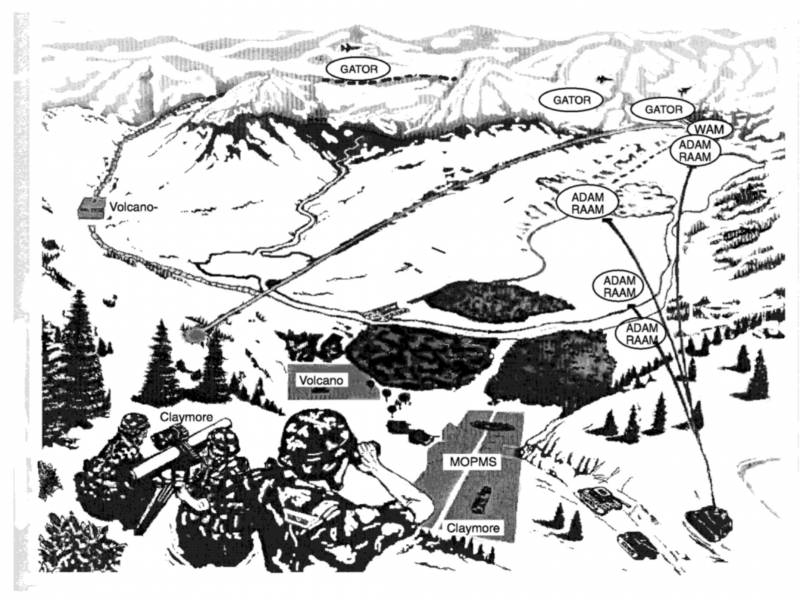
Information